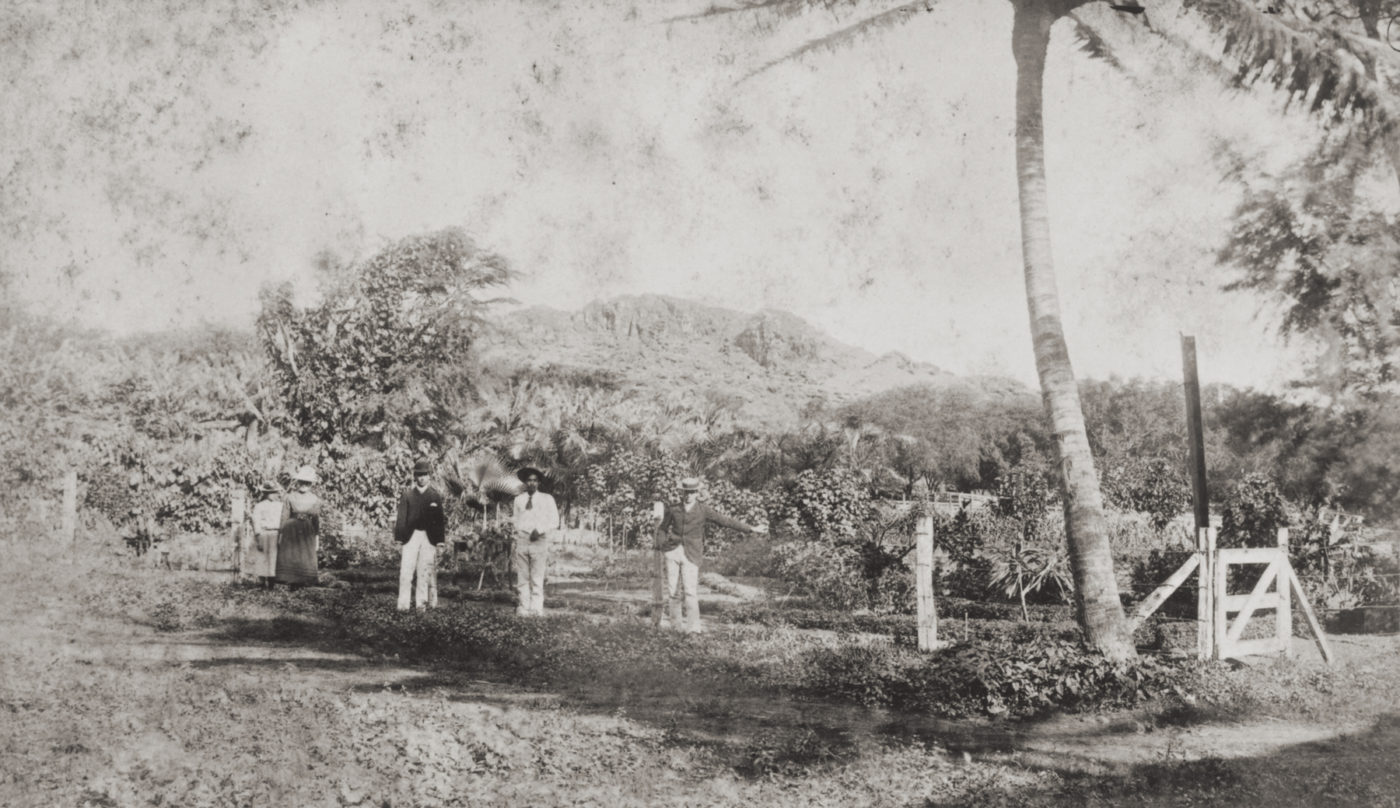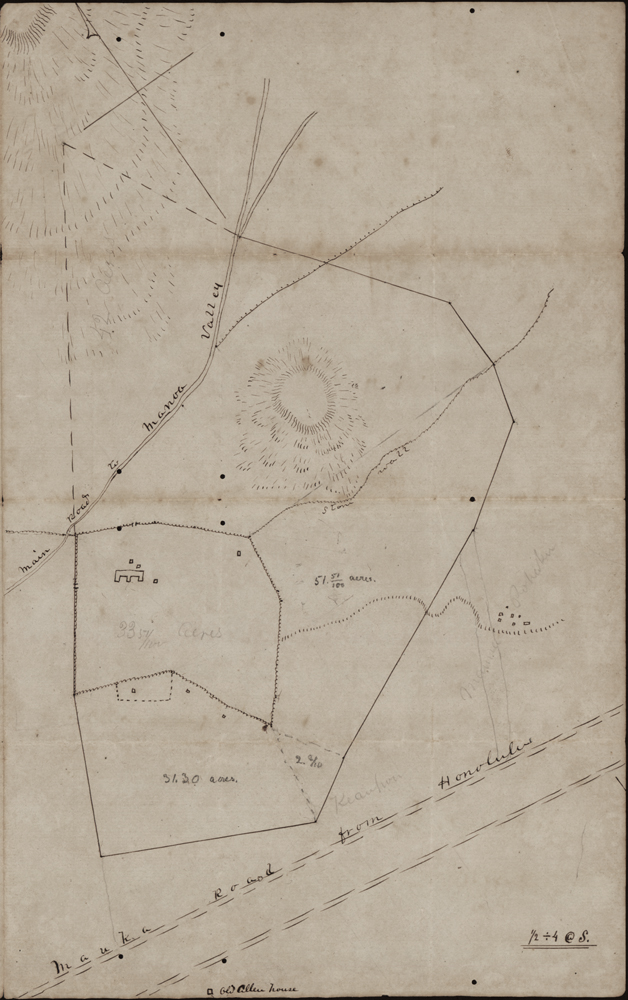Kapunahou has long been celebrated for its legendary freshwater spring. After the Battle of Nu‘uanu in 1795, Kamehameha I awarded Kapunahou to his loyal chief, Kame‘eiamoku, who died in 1802. His son, Ulumāheihei Hoapili, lived on these grounds from 1804 – 1811 and would often host Kamehameha I, who was said to have “enjoyed the retreat, drinking and bathing in the spring’s clear waters.”16 When moving to Maui in 1823, Hoapili gave the lands to his daughter, Liliha, and her husband, Boki, Governor of O‘ahu.
Transferring the Lands
- In 1829, Ka‘ahumanu, on the advice of Hoapili and over the protests of Liliha, persuaded Boki to give Kapunahou to Hiram Bingham. Boki acceded to her wish before embarking on a fatal journey in search of sandalwood. Given the “common stock” pledge of the missionaries, this effectively transferred the lands to the Sandwich Islands Mission.
- Kapunahou originally encompassed 224.65 acres, extending from ‘Ualaka‘a, or Round Top, to the grounds of Central Union Church. It included Kukuluae‘o, a separate, 77-acre parcel located near Kewalo Basin.17 Fields of lo‘i kalo (taro patches) once covered this “singularly verdant spot.”18
- In its 1845 review, the Board of Commissioners to Quiet Land Titles granted title of Kapunahou to the American Board of Commissioners for Foreign Missions (ABCFM), the Mission’s governing body. In 1857, ABCFM ended its work in Hawai‘i and conveyed the lands to the school.
— John Papa Ī‘ī, adviser to Kamehameha III, testimony to the Board of Commissioners to Quiet Land Titles
A New Era for Kapunahou
- Following the gift of land, Queen Ka‘ahumanu built a thatched cottage for herself above the spring and ordered a smaller one built nearby for Rev. and Mrs. Bingham.
- In 1831, Ka‘ahumanu arranged for the construction of a stone wall along the lower edge of Kapunahou to protect its uplands from wild cattle. “About two thousand men worked on it, and their tents dotted the plains.”19
- To mark the property’s border, Kauikeaouli (Kamehameha III) ordered an immense stone named Pōhakuloa moved from the slopes of ‘Ualaka‘a. The pōhaku, which weighed several tons, was later broken up to accommodate the widening of Punahou Street. The stone at the school’s entrance is said to be a remnant of that sacred pōhaku.
- In 1836, Mrs. Bingham planted night-blooming cereus on the wall. A visitor from Mexico had given her some branches of the vine.
- In 1841, Punahou School was founded on these storied lands.
— Sybil Bingham in a letter to Laura Judd, written in 1843 after returning to New England, describing cultivating the land around their cottage.
16 Alexander, Mary Charlotte and Dodge, Charlotte Peabody, Punahou 1841 – 1941, University of California Press, Berkeley and Los Angeles, 1941, p. 40.
17 The school campus today is 76 acres.
18 Alexander and Dodge, Ibid., p. 49. Letter from Sybil Bingham, 1845.
19 Ibid., p. 45


